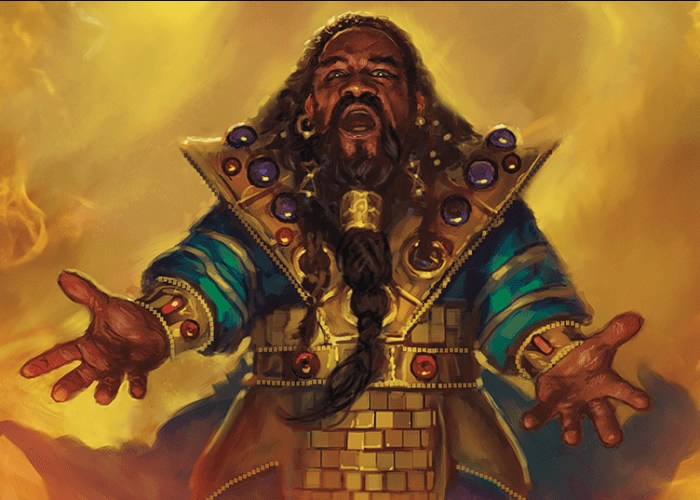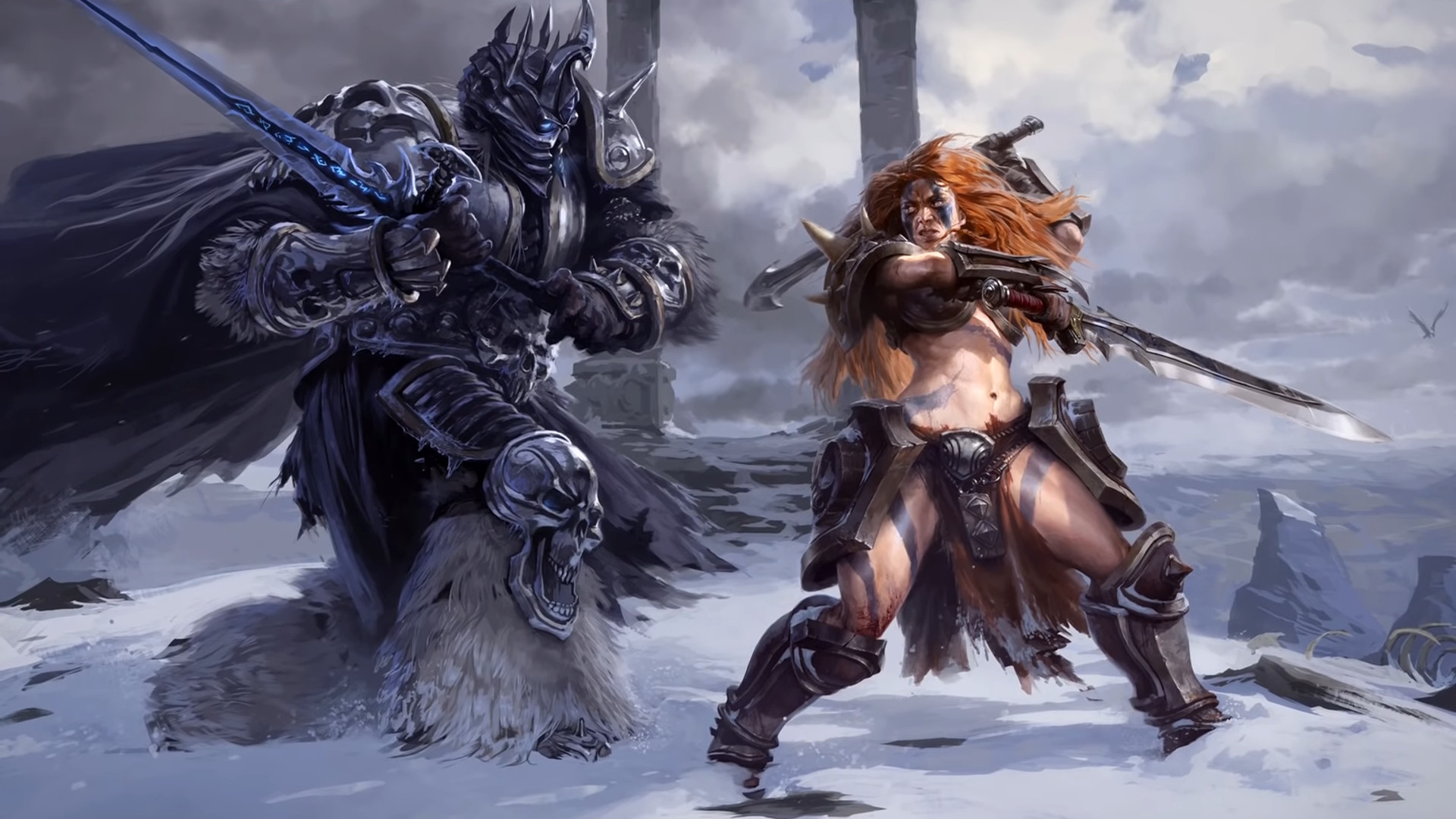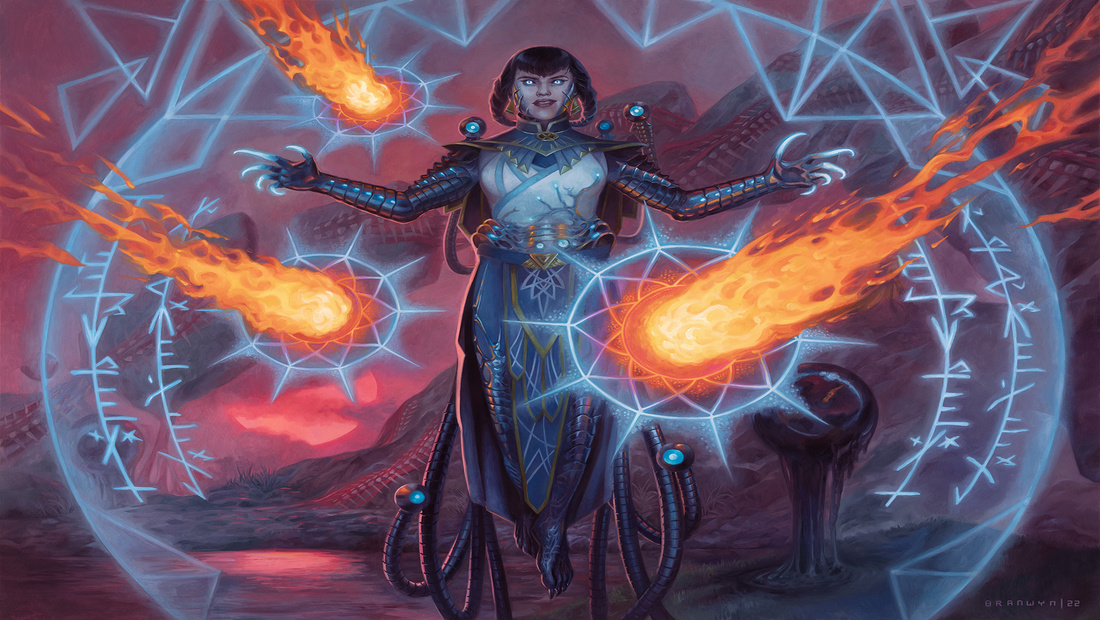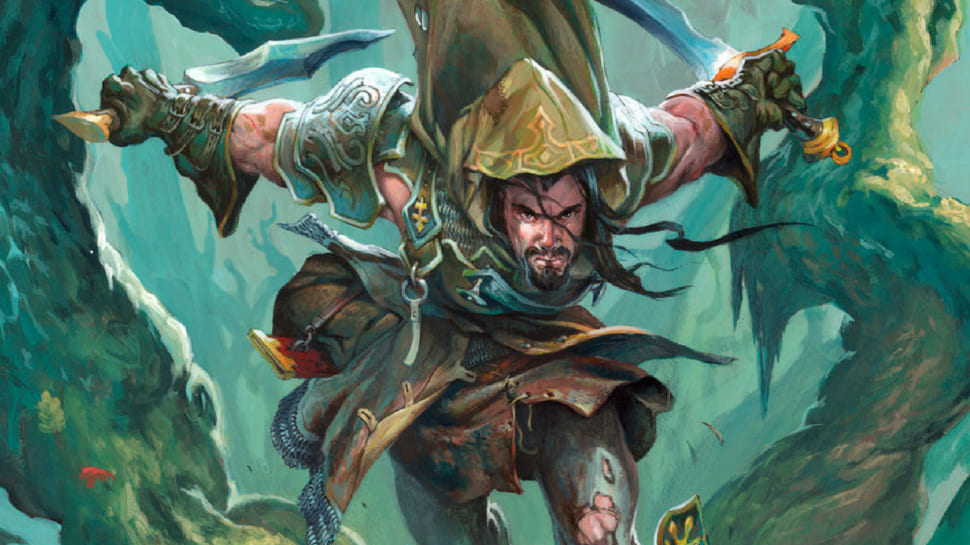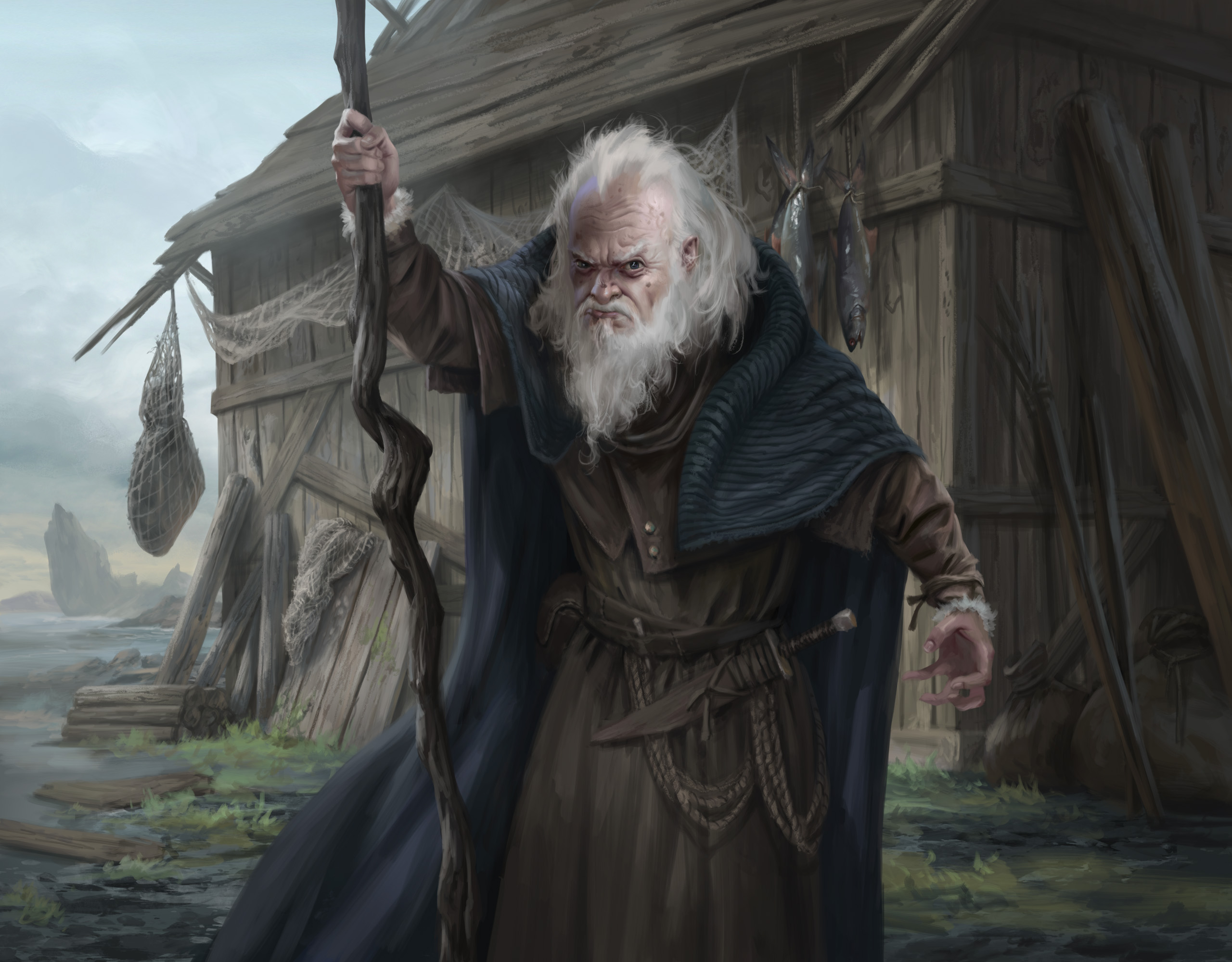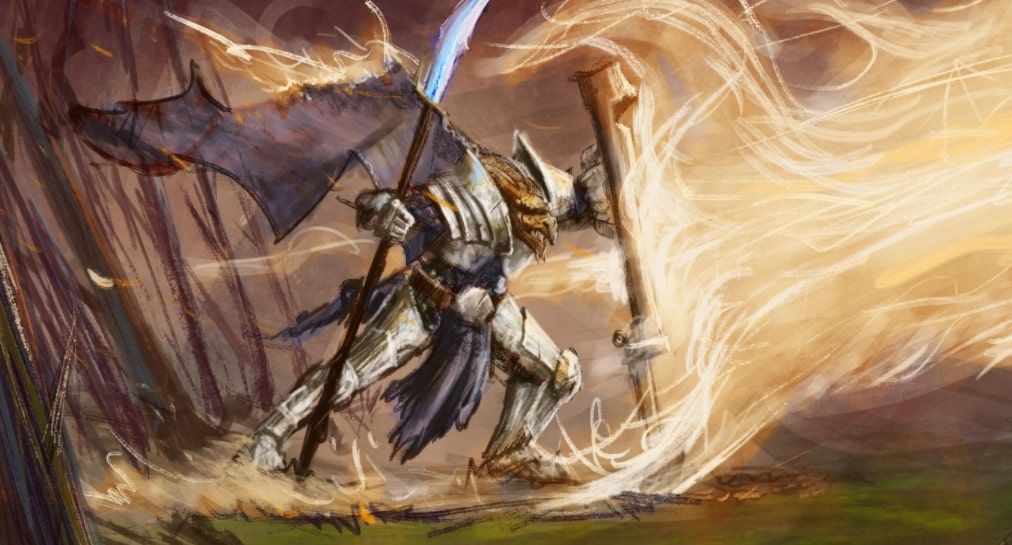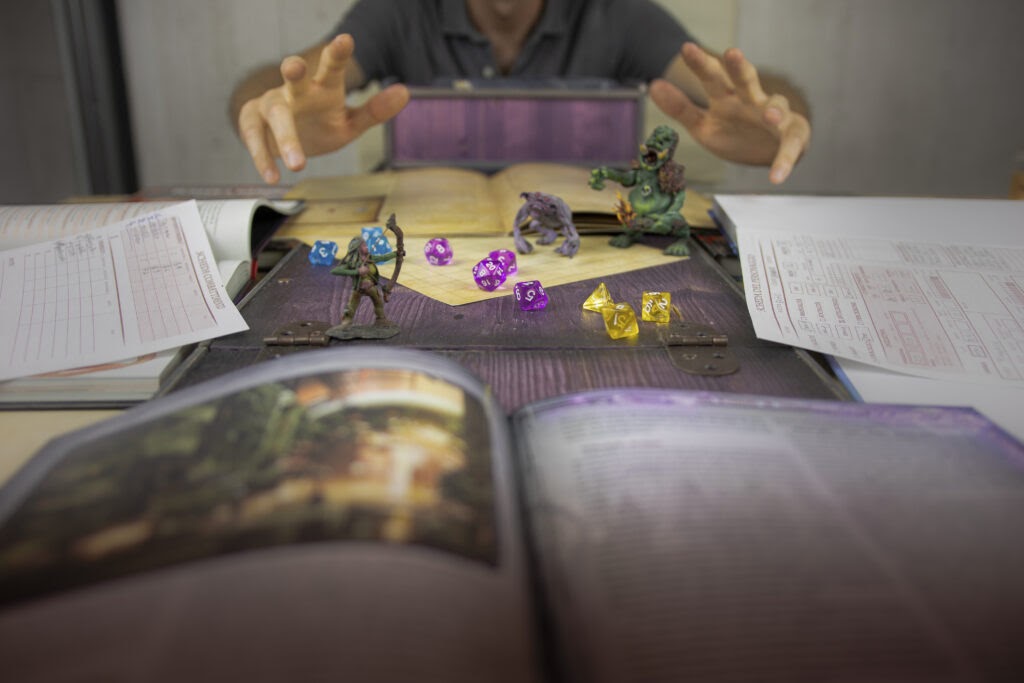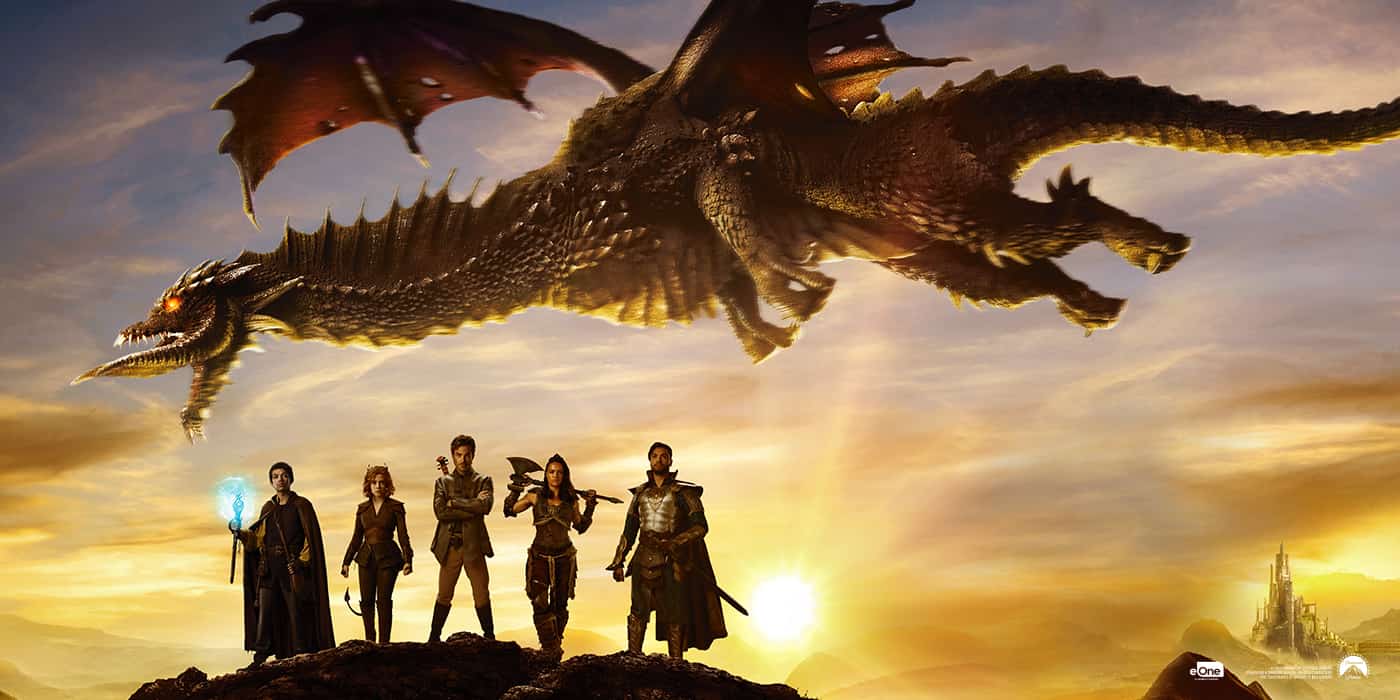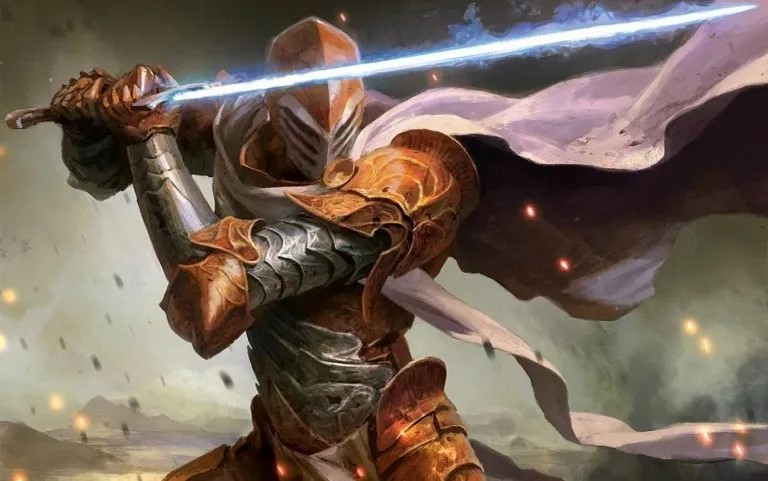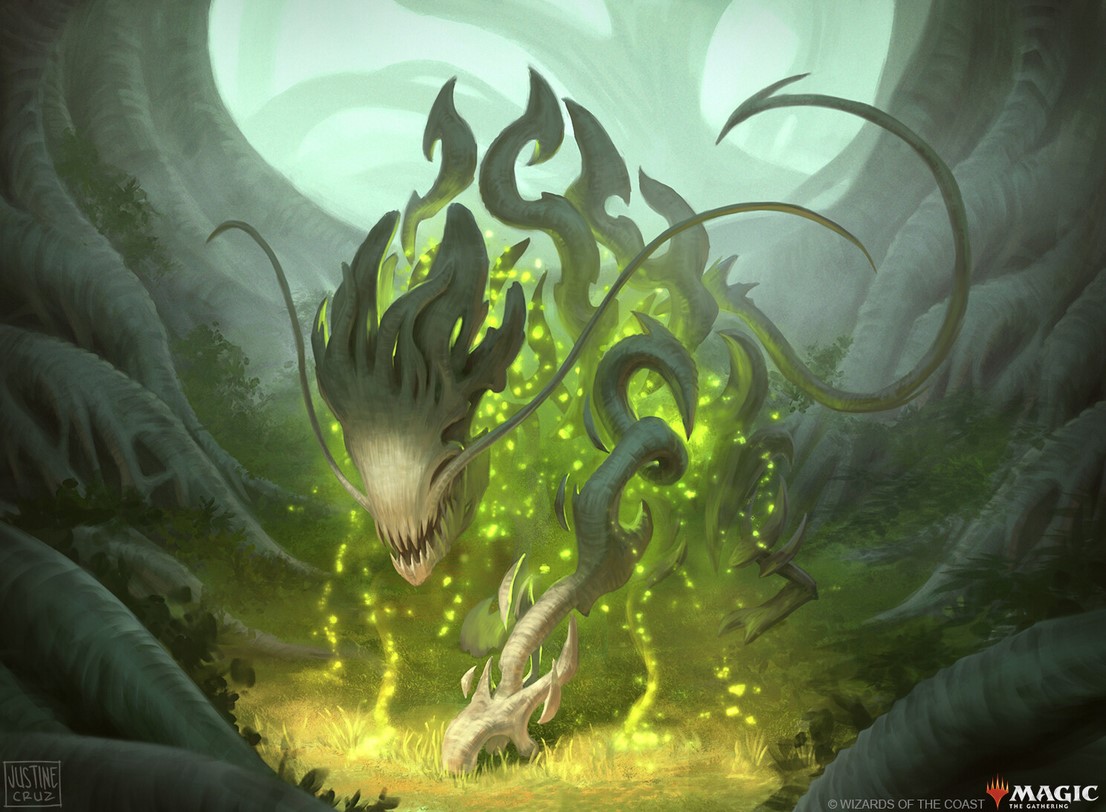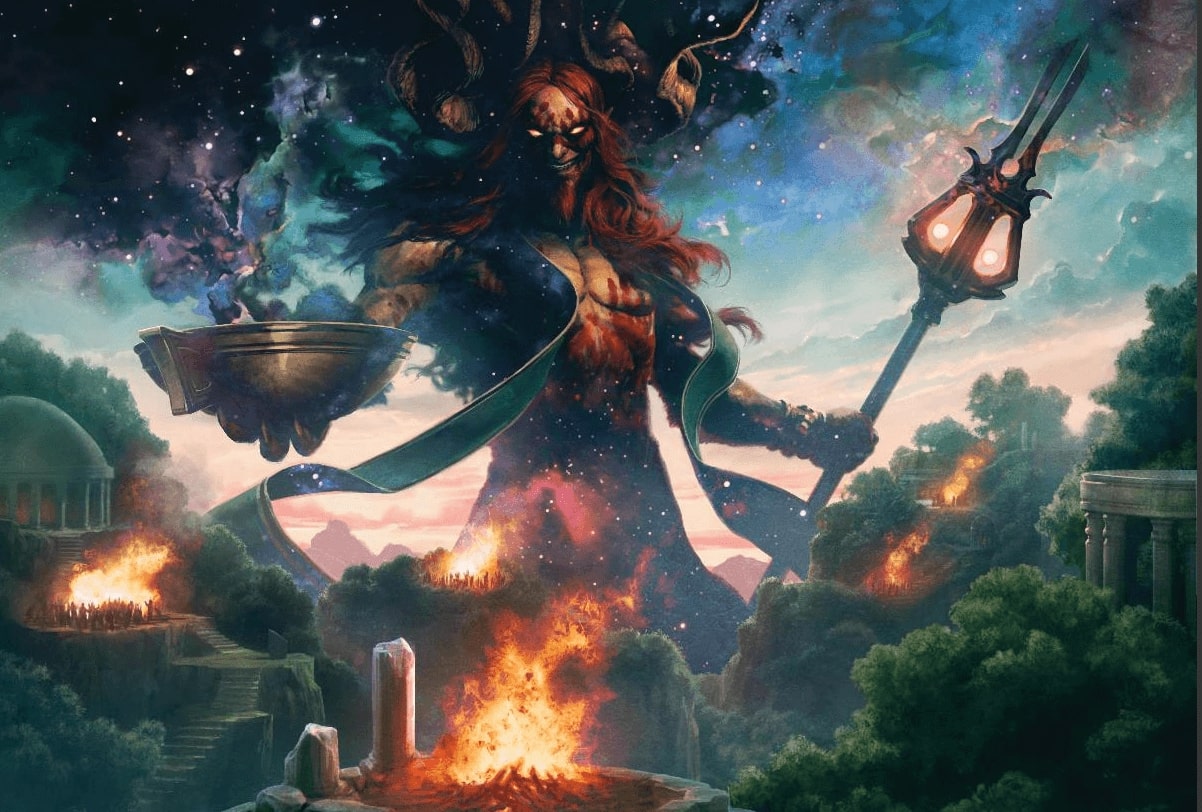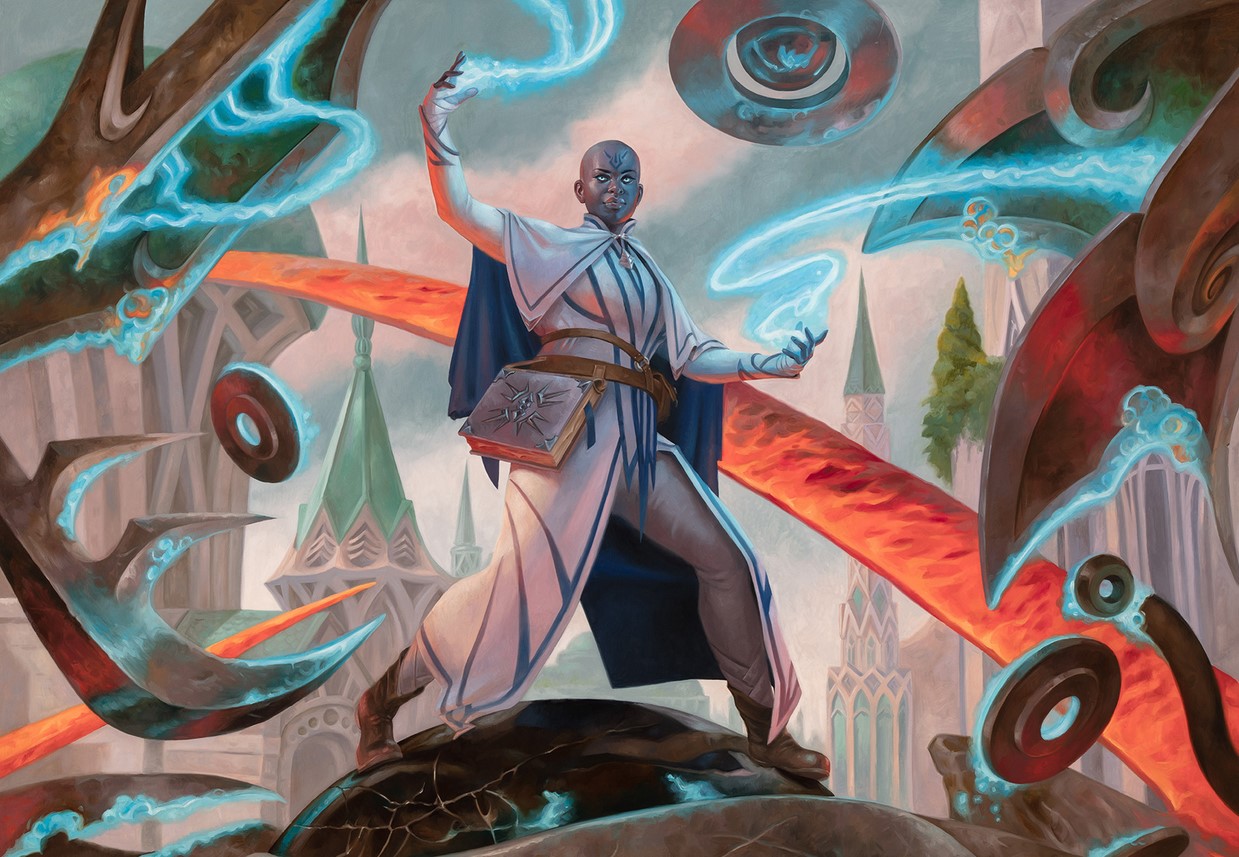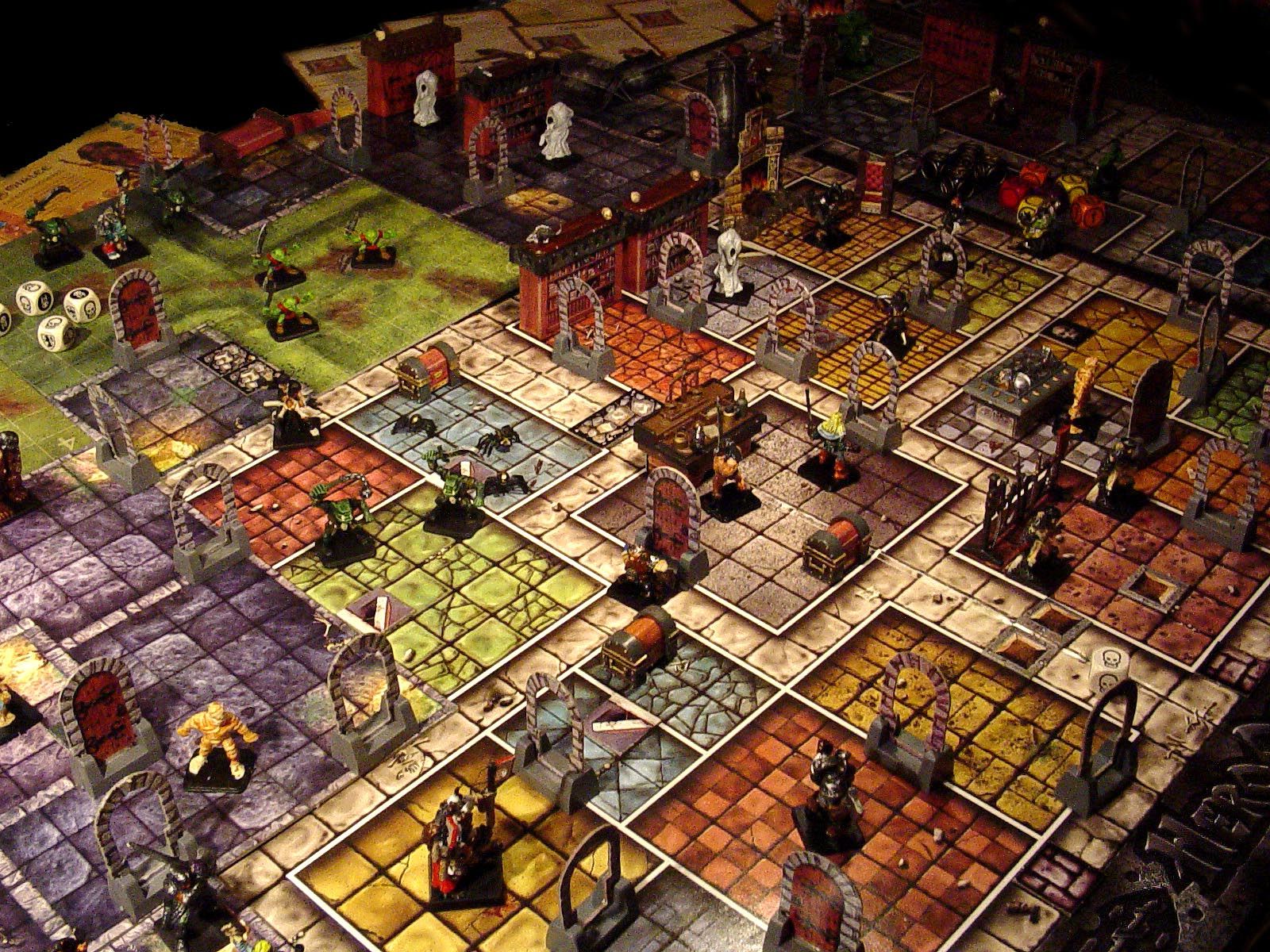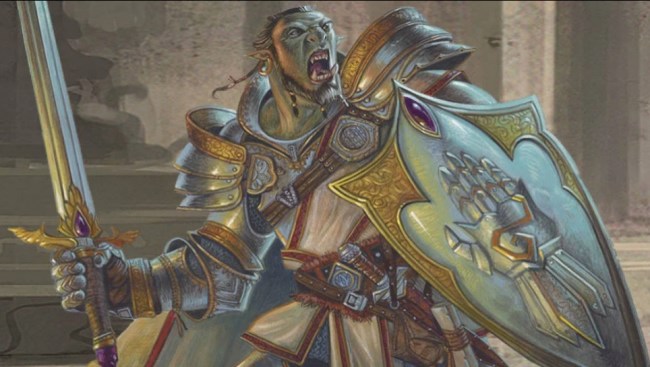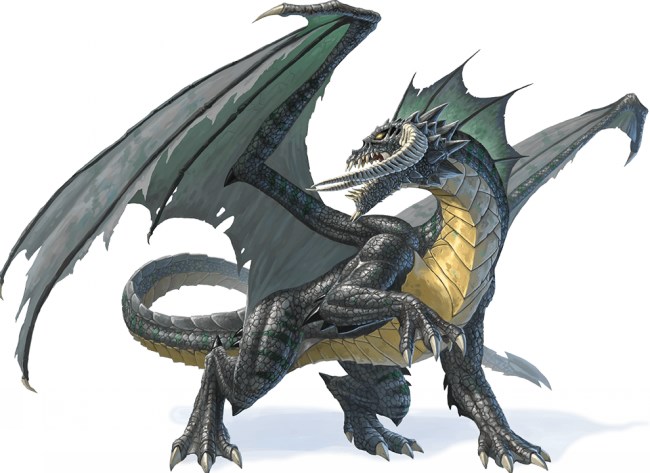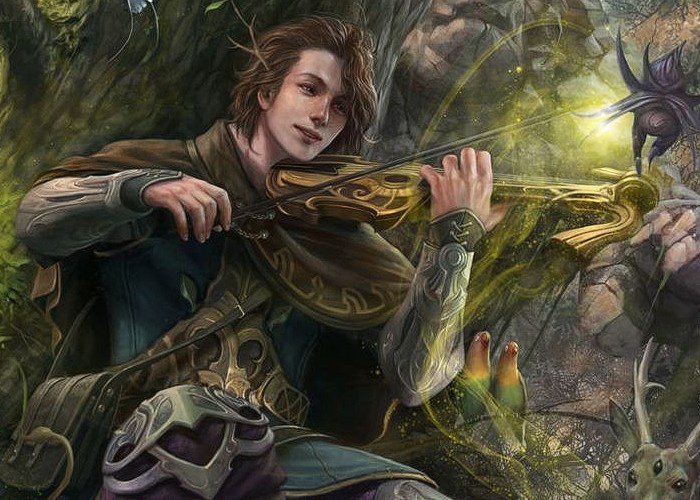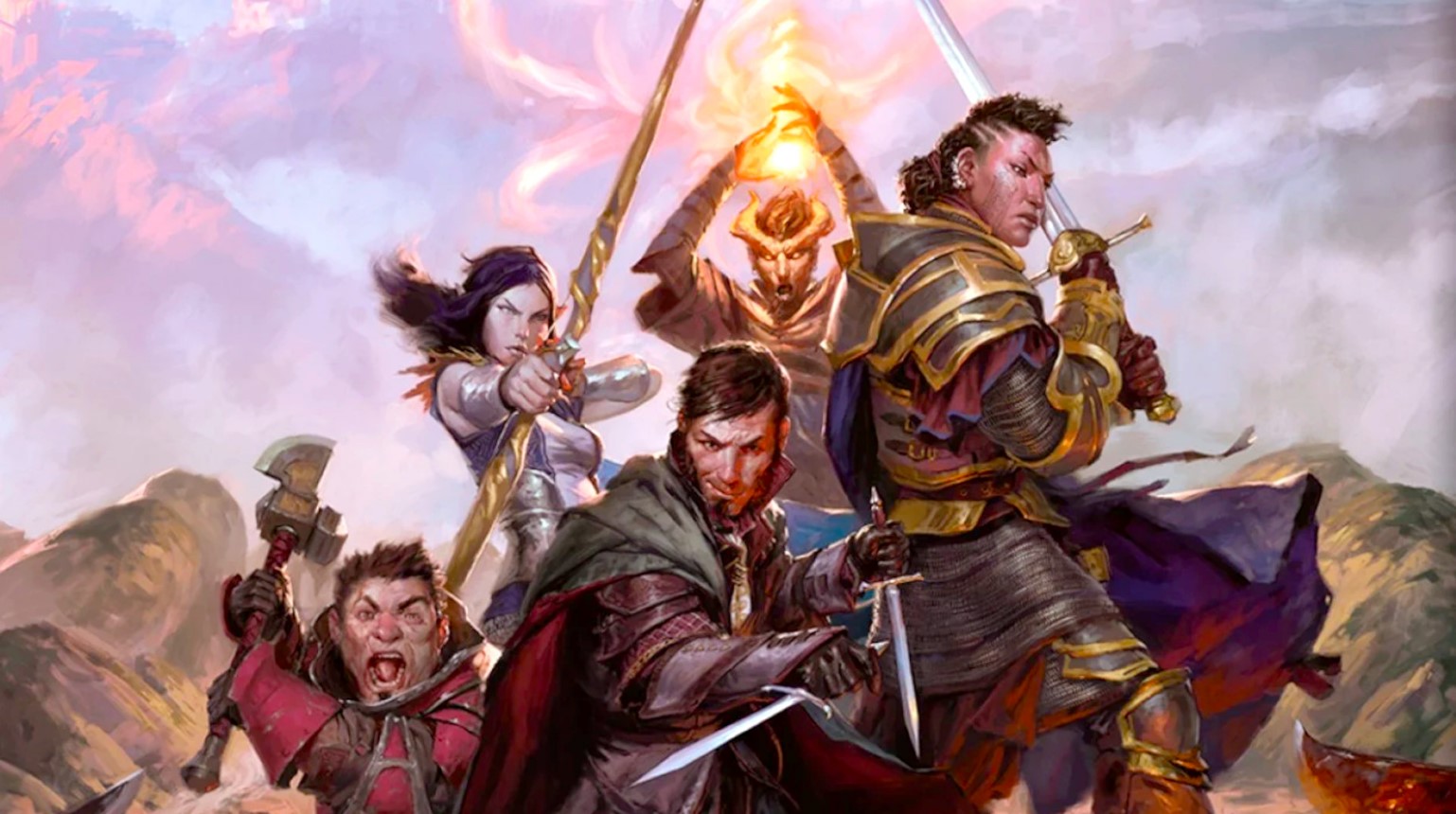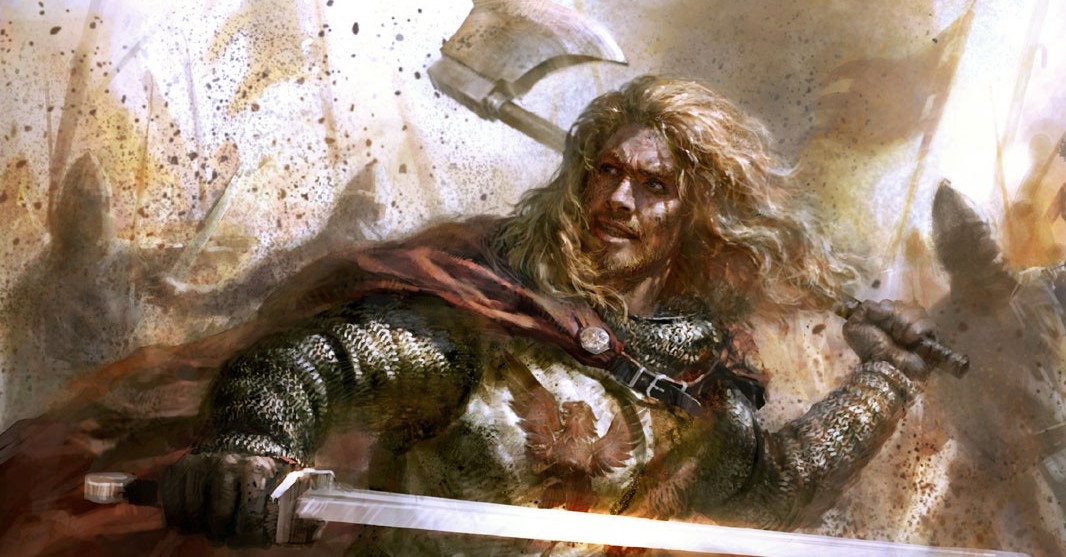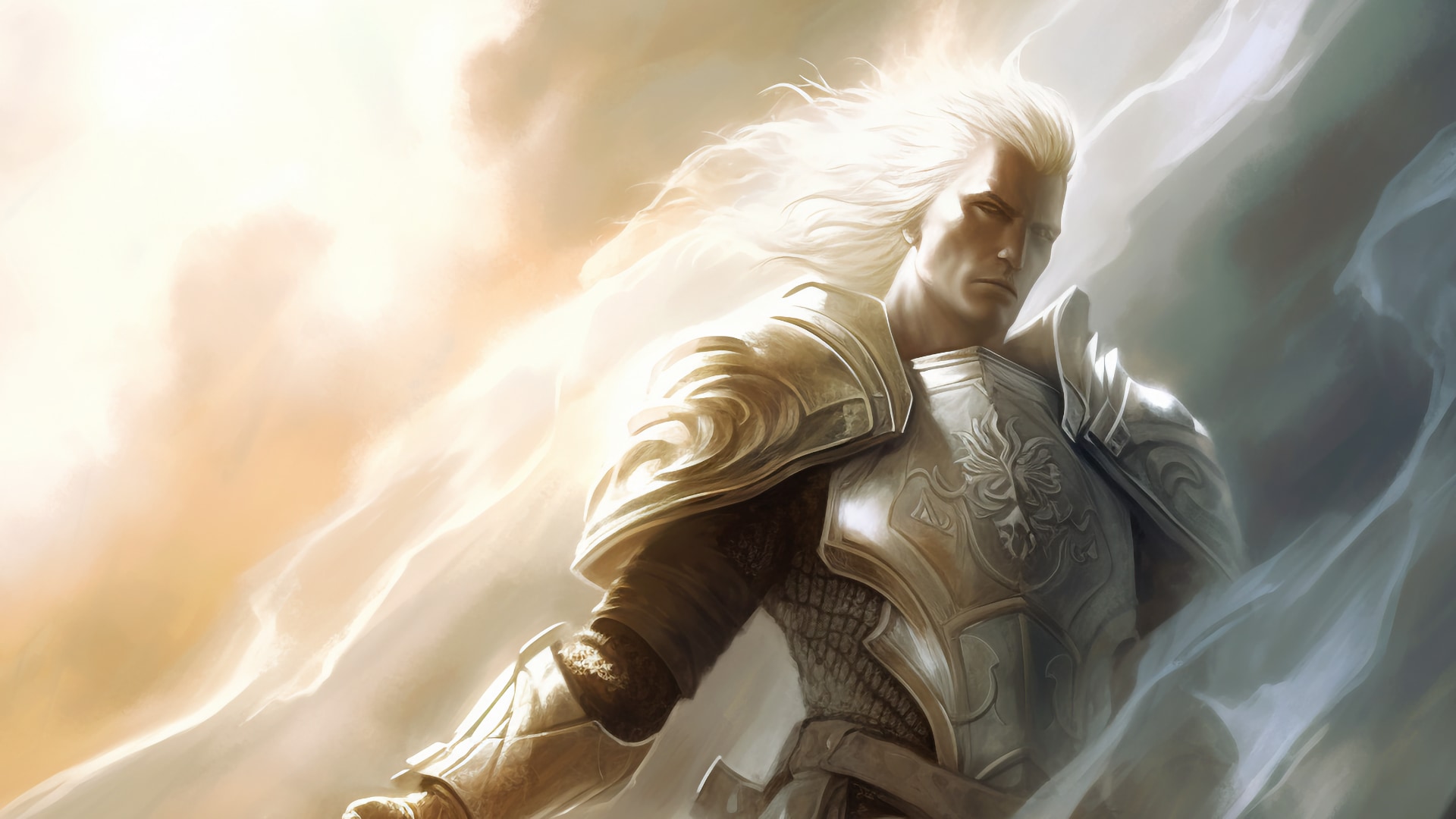
If you’ve read any of my other articles, you would know this much. In my opinion, whether you’re homebrewing a setting, a rule or a monster, intentional design is the key. There is a whole Monster Manual and multiple sourcebooks full of monsters ready to drop into your game, so if you’re homebrewing a monster, there’s normally a specific thing you want it to do. Often, a specific encounter it is built for.
There are three basic principles for homebrewing monsters that are worth balancing.
First, keep it intuitive. Don’t over complicate your monsters. As a Dungeon Master, you have enough to worry about already. If you’re adding in mechanics that are unusual, try to keep them similar to systems that are already native to D&D.
Second, make it memorable. Each ability that a homebrewed monster has should be distinct. This makes it memorable for both your players experiencing the fight, and the DM running the encounter. If you can remember it without looking it up, then you know you’ve done a good job.
Third, the homebrew monster should fit the encounter you’re trying to make, or broadly the story of the campaign. A horror setting should have horror monsters.
It’s also important to remember that monster design alone a good encounter does not make. Nor do difficult monsters. Integrate map design with cover, hazards, interactable objects and changes in elevation. Objectives that aren’t just “kill the enemy,” like having to capture or protect something. Narrative drama and stakes. These are all things to consider as well as the monster. Monster’s are the most forward facing element of the design, but everything in concert makes combat memorable.
Here are 20 D&D homebrew monsters, with a little bit of context, that you can adapt for your campaign. A mix of humanoids, undead, aberrations and fiends, with a plant based monster thrown in just for fun.
1. Droneskull
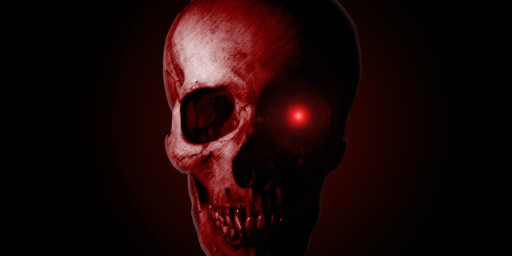
Normally head hunting means something else.
A humanoid skull, floating in mid air, perhaps chipped from battle damage, or carefully scrimshawed. Within its otherwise empty orbits, there is a dull arcane glow, and it flies to and fro silently, scanning for anything that moves.
Occasionally, the Droneskull seems to stretch its jaw, and a strange creaking sound can be heard. Set inside the mouth is a hand crossbow.
What Droneskulls lack in durability, they make up for in mobility, and make a great addition to any necromancer’s horde. They can be used to scout ahead, or get into places larger undead can’t reach. They’re small enough to fit four to a suitcase in places where a whole zombie would draw too much attention. A single Droneskull doesn’t pose much of a threat to anyone who can deal damage over range, but they can pick off weaker foes, or fly away to alert other forces.
In open combat, a small group of Droneskulls make a great addition to a larger force. They’re relatively low in health and damage, but while the party is preoccupied with the main force, the Droneskulls can find obtuse angles to flank from.
Increase the number of Droneskulls dramatically, and you have a frightening story beat. Maybe your party has encountered Droneskulls before. In one’s and two's, left to guard mostly abandoned hideouts, or handfuls that swarm in to attack the party from where they don’t expect.
And then, one day, maybe during a fight, maybe while traveling, the sun goes out. A swarm large enough to blot out the light of day.
- Droneskull
- Small undead, typically chaotic evil
- AC: 12
- HP: 10
- SPD: 30ft fly
- STR: 7 (-2) DEX: 14 (+2) CON: 10 (+0) INT: 7 (-2) WIS: 10 (+0) CHA: 7 (-2)
- Skills: Perception +2
- Condition Immunities: Poisoned, exhaustion
- Damage Immunities: Poison
- Damage Vulnerabilities: Bludgeoning
- Senses: Darkvision 60ft., passive perception 9
- Languages: Understands all languages it knew in life, but cannot speak.
- Challenge: ½ (100xp)
- Limited Capabilities: The Droneskull cannot take the grapple or shove action
- Loading: The Droneskull stores up to ten pieces of hand crossbow ammunition within its cranium.
- ACTIONS
- Hand Crossbow: Ranged weapon attack, +4 to hit, range 30/120ft., one target. Hit. 5 (1d6+2) piercing damage.
2. True Believer
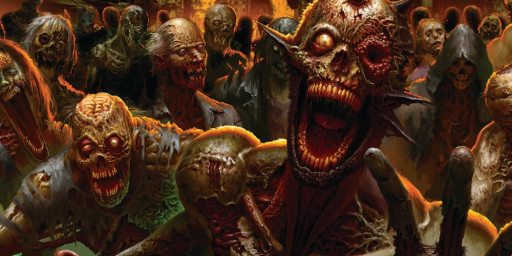
Exploding enemies that charge at the players immedeatly change the dynamics of a combat.
A True Believer is a humanoid member of a cult to a deity that presides over the undead. The True Believer has been consumed by a compulsion to take in toxic material - waste, diseases, rotting flesh, alchemical components. Eat, inject, surgically implant, whatever means are available. The result is a disgusting creature. Toxic smells and sights oozing from open wounds and orifices, blackened veins, reeking like rotting meat, skin squirming with maggots just below the surface. They rush at enemies with reckless abandon, before exploding with a violent force. If they are successful in their venture, their skeleton animates, still dripping with gore, and continues the fight in the chaos they have created.
Video game culture has gifted most players with an ability to “read” the visual language of a lot of games. Red barrels explode when shot, that wall looks like you could break it down, and the glowing green guy sprinting at you is going to blow up if he gets within spitting distance. Add True Believer’s into your combats sparingly, for a little spice.
- True Believer
- Medium undead, typically chaotic evil
- AC: 12
- HP: 10
- SPD: 30ft
- STR: 10 (0) DEX: 16 (+3) CON: 14 (+2) INT: 10 (+0) WIS: 10 (+0) CHA: 10 (+0)
- Condition Immunities: Poisoned
- Damage Immunities: Poison
- Senses: Darkvision 60ft., passive perception 10
- Languages: One language.
- Challenge: 1 (200xp)
- Strength of Belief: If damage reduces the True Believer to 0 hit points, it must make a Constitution saving throw with a DC of 5 + the damage taken, unless the damage is radiant or from a critical hit. On a success, the True Believer drops to 1 hit point instead.
- ACTIONS
- Destruction: The True Believer reduces itself to 0HP and detonates, ending its turn. All creatures within 5ft of the True Believer must make a DC14 constitution saving throw. On a failure the creature takes 10 (4d4) necrotic damage and is thrown 10ft in a straight line before falling prone. On a success, a creature takes half damage, but suffers no other effects. The True Believer’s skeleton automatically animates at the start of its next turn.
3. Arcanoballista

Adding sci-fi or steampunk elements to your campaign can add great monster variety.
A bronze and hardwood platform, clunking around on four mechanical legs, huge but insect like in construction. On The platform is a ballista, with an ammunition box on top. All over the construct you can see arcane runes which glow faintly, wiring and tubing just visible through gaps in the plates, and the faint smell of oil and ozone hangs around it.
Arcanoballista were created to bring mobile firepower to the battlefield, often commanded by an artificer. If left to their own devices, Arcanoballista have a tendency to use their immense strength to climb their way to a high point and shoot at passers by. Arcanoballista that run out of ammo will eventually power down, and wait to be reloaded by someone authorized to do so.
If you have, at any point in the campaign, introduced your party to the horrors of well positioned field artillery. Then the table will lose their mind when the Ballista gets up and scuttles away as they start to get close.
- Arcanoballista
- Large Construct, Neutral
- AC: 20
- HP: 85
- SPD: 30ft, climb 15ft
- STR: 18 (+4) DEX: 16 (+3) CON: 16 (+3) INT: 7 (-2) WIS: 14 (+2) CHA: 7 (-2)
- Saving Throws: Strength +7, Constitution +6
- Condition Immunities: Exhausted, poisoned, frightened, charmed
- Damage Immunities: Poison, psychic
- Senses: Darkvision 60ft., passive perception 12
- Challenge: 7 (2900xp)
- Tortoise: If flipped onto its back, the Arcanoballista cannot right itself. Its speed is reduced to 0, it cannot make melee attacks, cannot use its “stabilize” ability and has disadvantage on ranged attack rolls.
- Loading: The Arcanoballista has twelve pieces of ammunition.
- ACTIONS
- Ballista: Ranged Weapon Attack: +7 to hit, range 120/480 ft., one target. Hit 19 (3d10 + 3) piercing damage.
- BONUS ACTIONS
- Stabilize: At the start of the Arcanoballista’s turn, it can attempt to stabilize. Its speed drops to 0 until the start of its next turn as it vents gasses from its gears and locks itself into place. Roll a D6. On a 6, the Arcanoballista adds 1d10 to attack and damage rolls this turn.
4. Bugbear Strangler
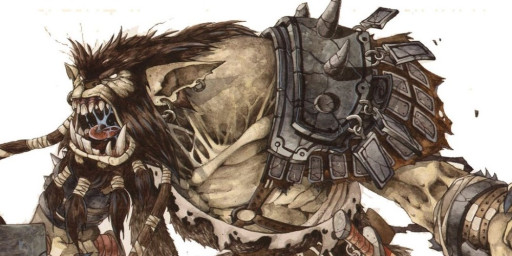
Peekaboo!
The assassins of a goblin horde, the Bugbear Strangler uses its stealth and ability to climb to ambush unsuspecting foes. A great way to get the drop on the party, or send a Strangler or two around the back of a fight to hunt down the wizard .
Its special ability “strangle” is a little complicated, but makes for very interesting encounters, especially in combination with “body shield.”
- Bugbear Strangler
- Medium goblinoid (bugbear), typically chaotic evil
- AC: 16
- HP: 27
- SPD: 30ft, climb 30ft
- STR: 14 (+2) DEX: 16 (+3) CON: 12 (+1) INT: 8 (-1) WIS: 10 (+0) CHA: 8 (-1)
- Skills: Stealth +5, Acrobatics +5, Athletics +4
- Senses: Darkvision 60ft., passive perception 10
- Languages: Goblin.
- Challenge: 2 (450xp)
- Long Limbed: All melee attacks have their range extended by 5ft, this is already incorporated into the stat block.
- Punisher: If the Bugbear Strangler has advantage on an attack roll, they deal an additional 1d6 damage.
- ACTIONS
- Blackjack: Melee Weapon Attack: +4 to hit, reach 10ft., one target. Hit 6 (1d6 + 3) bludgeoning damage.
- Strangle: The Bugbear Strangler makes a contested grapple check using their acrobatics (+5) against a target up to 10ft away. If the strangler succeeds, the target is restrained and cannot speak or cast spells with a verbal component. While they have a target strangled, the Strangler’s AC increases by +2. A strangled creature can use an action to repeat the grapple check, ending the condition on a success.
- BONUS ACTIONS
- Nimble escape: The Bugbear Strangler can make a dash, disengage or hide action as a bonus action.
- Choke: The Strangler deals 1d10+3 bludgeoning damage to a target they have strangled.
- REACTIONS
- Body Shield: When targeted by a melee or ranged attack the Bugbear Strangler can see, and before they know the result of the roll, he can choose to interpose a strangled creature between themselves and the attack. If the attack misses the Bugbear Strangler, it hits the strangled target if it beats their AC.
5. Waxhorror
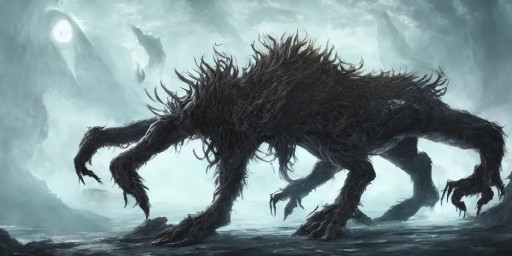
Ever walked through a dungeon in a videogame and wondered "why are there lit candles?"
The bones and black candles begin to congeal, first into floating orb, as sleek as polished obsidian. Bones slowly bubble to the surface, and the monster gives birth to itself. Hunched back, with bone armor. Stocky, bipedal with clawed hands and feet, ribs forming a long face, candlelight burning in the orbits.A long tongue made of black wax unrolling from between its teeth, ending in barbs like a morning star mace. The creature stands, tongue lapping the air and bone claws clicking against the stone floor.The Waxhorror is a fantastic enemy to challenge low level parties. Its attacks are dangerous, but it can only attack once per round. It has decent hit points to keep the fight going, but low AC so it doesn’t drag out too long. Finally, its bonus action ability forces the players to scrounge around in the environment or switch to back up weapons. Maybe the Waxhorror has taken up residence in an abandoned armory, or a tomb where long dead paladins were buried with their weapons.
And maybe after defeating the Waxhorror, the player’s discover some nice loot its eaten.
- Waxhorror
- Large Undead, typically chaotic evil
- AC: 10
- HP: 78
- SPD: 30ft,
- STR: 16 (+3) DEX: 10 (+0) CON: 12 (+1) INT: 6 (-2) WIS: 10 (+0) CHA: 6 (-2)
- Senses: Darkvision 60ft., passive perception 10
- Challenge: 2 (450xp)
- Temporary Creation: When the Waxhorror falls to 0hp, it deanimates, and any inanimate objects it has consumed can be recovered.
- ACTIONS
- Bite: Melee Weapon Attack: +5 to hit, reach 10ft., one target. Hit 6 (1d6 + 3) piercing damage.
- BONUS ACTIONS
- Consume (recharge 5-6): The Waxhorror lashes out at a target with their barbed tongue. The target up to 15ft away has to make a competing athletics check. On a failure, the Waxhorror consumes one item the target is holding.
6. Viruscore

Outside of traps, poison gas is rarely a weapon in D&D 5e
A four legged platform made out of rapidly patinating bronze and brass. On its back are a series of bronze chambers and barrels, riveted together from plates. Pressure gauges fluctuate and small smokestacks wheeze a greenish smoke. When engaged in combat the Viruscore deploys a pair of stabbing blades like a praying mantis’ forelegs, and sprays a toxic, green gas that reeks like bleach. When operating in a patrol, other constructs keep the Viruscore protected, or drag weaker enemies into the radius of the gas.
Does your campaign feature a Terminator-esque robot uprising? Well, the next three monsters are for you, and pair very well with the Arcanoballista.
- Viruscore
- Large Construct, typically lawful evil
- AC: 16
- HP: 100
- SPD: 15ft,
- STR: 16 (+3) DEX: 14 (+2) CON: 16 (+3) INT: 10 (+0) WIS: 10 (+0) CHA: 10 (+0)
- Damage Immunities: Poison, Psychic
- Condition Immunities: exhausted, poisoned, frightened, charmed, sleep
- Senses: Darkvision 60ft, passive perception 10
- Challenge: 8 (3900xp)
- Virus Aura: Each creature which starts its turn within 15ft of the Viruscore has to make a DC15 constitution saving throw or take 17 (5d6) poison damage and suffer one level of exhaustion. On a success they take half as much damage and suffer no other effects. The gas travels around corners.
- ACTIONS
- Multiattack: The Viruscore can make two weapon attacks with its attack action.
- Piercing Lance: Melee Weapon Attack: +5 to hit, reach 5ft., one target. Hit 7 (1d8 + 3) piercing damage.
7. Clockwork Bolter
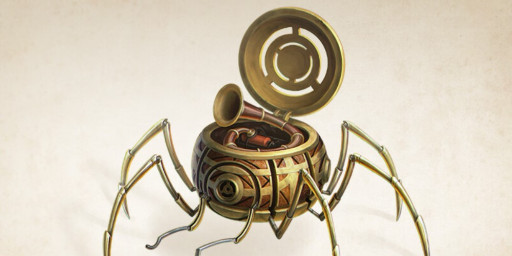
A pocket watch with a bad attitude.
A small steel and wood construction with eight legs and a complex arrangement of arcanotech across the top, including a bore which shoots bolts of magical force.
One Clockwork bolter is hardly a problem, and can be destroyed with a heavy rock if one gets close enough to it. The problem, however, is twofold. First, getting close. Clockwork Bolters seem to be highly perceptive, and will retreat well before being engaged at close range if they can help it. Second, Clockwork Bolters are rarely caught out alone. Even when observed scouting in a stealthy fashion, Clockwork Bolters l get about in groups of two or three. When engaging in combat, Clockwork Bolters will either swarm together en masse on some section of highground, hold ambush points or act as flankers, moving at speed to exploit exposed weak spots in the enemy formation.
- Clockwork Bolter
- Small Construct, typically lawful evil
- AC: 12
- HP: 15
- SPD: 30ft, 20ft climb
- STR: 10 (+0) DEX: 10 (+0) CON: 10 (+0) INT: 10 (+0) WIS: 16 (+3) CHA: 10 (+0)
- Skills: Perception +5
- Damage Immunities: Poison, Psychic
- Condition Immunities: exhausted, poisoned, frightened, charmed, sleep
- Senses: Darkvision 60ft, passive perception 10
- Challenge: 1/4 (50xp)
- Spider Climb: The Clockwork Bolter can climb vertical and horizontal surfaces without needing to make an ability check.
- Arcane Nature: A creature who is immune to the magic missile spell is also immune to the Arcane Bolt attack.
- ACTIONS
- Multiattack: The Clockwork Bolter can make two arcane bolt attacks with its attack action.
- Arcane Bolt: Ranged Spell Attack: +5 to hit, range 120ft., one target. Hit: 5 (1d4 + 3) force damage.
- BONUS ACTIONS
- Mechanical Scuttler: The Clockwork bolter can dash as a bonus action.
8. Automaton Clanker

Remember: humanoid enemies who don't need to breathe or sleep, or feel pain, are hard to evade or escape from.
The muscle of the arcanotech uprising! Automaton Clankers are humanoid in general design. They’re slow, but unrelenting in the pursuit of their targets, and will often stumble into traps and Hazards. But that’s fine. They clog these hazards with their bodies until the next Clanker can simply walk through.
Warforged Clankers are capable of picking up and using weapons around them, and manipulate their environment. They have a fondness for dragging enemies into areas where they are exposed to other dangers.
- Automaton Clanker
- Medium Construct, typically lawful evil
- AC: 15
- HP: 25
- SPD: 30ft
- STR: 16 (+3) DEX: 10 (+0) CON: 16 (+3) INT: 10 (+0) WIS: 16 (+3) CHA: 10 (+0)
- Skills: Athletics +5
- Damage Immunities: Poison, Psychic
- Condition Immunities: exhausted, poisoned, frightened, charmed, sleep
- Senses: Darkvision 60ft, passive perception 10
- Challenge: 1/2 (100xp)
- ACTIONS
- Multiattack: The Automaton Clanker can attack twice with their attack action.
- Fist: Melee Weapon Attack: +5 to hit, reach 5ft., one target. Hit 7 (1d8 + 3) bludgeoning damage.
8. Shield Unit
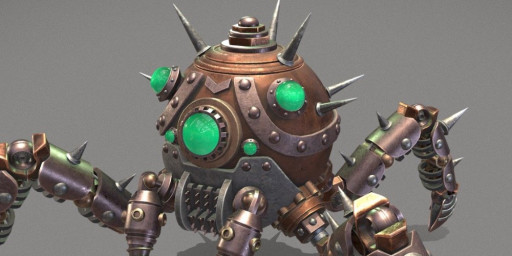
A group of enemies can benefit from a centrepiece with different abilities. It adds a problem solving element to combat.
The Shield unit looks like a walking bulwark, made mostly of solid stone and steel, with four blocky legs like towers. Shield Units are slow, and rare, but act as the heart of construct formations. They can be deployed in the front, defending a powerful but slow moving spearhead, or in the rear, repairing damaged units and protecting constructs that have a ranged capability. It radiates a magical energy which covers friendly constructs in a shield and repairs them if damaged, knitting metal back together.
And now you’ll be able to see how you can throw a couple of constructs together to make a really interesting encounter. Do you deal with the shield unit or Viruscore first? Are the Clankers dragging innocent people into the gas? Are you setting up an ambush for a construct patrol passing through, or have they caught you by surprise?
- Shield Unit
- Large Construct, typically lawful evil
- AC: 20
- HP: 100
- SPD: 20ft
- STR: 14 (+2) DEX: 14 (+2) CON: 18 (+4) INT: 10 (+0) WIS: 16 (+3) CHA: 10 (+0)
- Damage Immunities: Poison, Psychic
- Condition Immunities: exhausted, poisoned, frightened, charmed
- Senses: Darkvision 60ft, passive perception 10
- Challenge: 5 (1800xp)
- Passive Shielding: All creatures of the Shield Unit’s choosing within 10ft, gain a +2 to AC and saving throws while it is conscious.
- ACTIONS
- Force Blast: Melee Weapon Attack: +5 to hit, reach 5ft., one target. Hit 5 (1d6 + 2) force damage. Any creature hit with this attack must succeed on a DC13 dexterity saving throw or be forced 15ft back
- Healing array: The shield unit can heal one construct within 10ft for 7 (2d4+2) hit points
9. Abductor Fungi
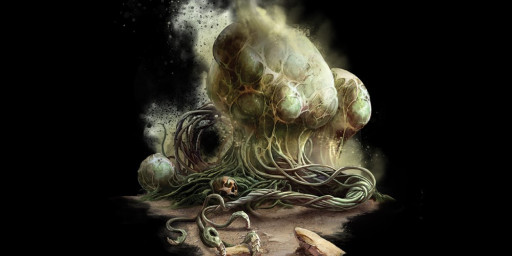
A fine addition to any damp cavern.
Abductor Fungi are vaguely spherical in nature, made of sponge-like fungus and mold, filled with an off-green gas that makes them float. Hanging from under them are long, surprisingly strong tendrils that Abductor Fungi use to navigate their environment or anchor themselves in place for a long duration. When they detect something moving in their environment, they’ll swarm towards it, grab it with its tendrils and fly away with it. Those who have survived the journey saythat they are often left in fungus filled lairs or crevices high above the ground.
Abductor Fungi make great ambush creatures, as the party is unlikely to notice them until they’re already too close, or they float down silently from above.
- Abductor Fungi
- Medium Plant, neutral
- AC: 10
- HP: 25
- SPD: 30ft fly
- STR: 16 (+3) DEX: 10 (+0) CON: 16 (+3) INT: 10 (+0) WIS: 14 (+2) CHA: 10 (+0)
- Skills: Athletics +6
- Damage Vulnerabilities: Fire
- Senses: Blindsight 30ft, passive perception 10
- Challenge: 1 (200xp)
- Hivemind: This creature, should it be in contact with another plant or fungus, can feel what that plant or fungus feels.
- ACTIONS
- Noose: Melee Weapon Attack: +6 to hit, reach 10ft., one target. Hit 7 (1d8 + 3) bludgeoning damage. On a hit, the target must make a competing athletics check or become restrained. At the start of each of their turns, they take 6 (1d6+3) bludgeoning damage, and can use their action to repeat the check, ending the effect on a success.
10. Covenant Devil
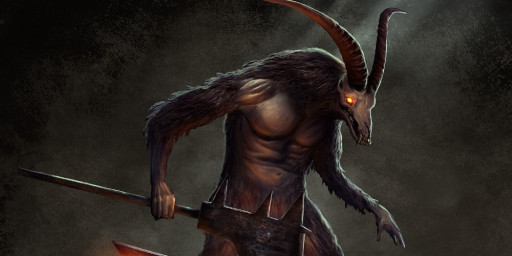
All crossroads, bargains and teeth, this is a classic devil
A Covenant Devil in its true form cannot easily be seen on the material plane. A spell like “see invisibility” or an ability that allows one to see into the ethereal plane reveals a red floating jellyfish creature. In this form, a covenant devil seeks to make very fast bargains with those in great fear or pain, promising to end the feeling. If a creature agrees, the Covenant Devil enters its body and transforms it irreparably. The soul of the creature is sent to the nine hells and the Covenant Devil assumes its form as something that can walk the material plane. A reddish, scaled body, with patches of ruddy brown fur rippling with inhuman muscle. A head somewhere between a bull and a goat, with goat's eyes and an array of horns. A serpent's tongue in a mouth full of short, sharp teeth. Bipedal, with cloven hooves and clawed hands, and a pair of leathery wings.
Covenant Devils tend to relish their new found freedom, and have to be corralled by stronger agents of the hells. Covenant Devils who are not brought under control quickly tend to settle in crossroads and continue to broker deals on their own.
A single Covenant Devil can be a dangerous fight for lower level players. A criminal about to be hanged gives up his soul, and the devil begins tearing its way through the crowd. A devil menacing a crossroads has to be run off.
Where they get dangerous is in moments of mass panic. Cultists start a fire in the city, knowing full well that, just out of sight, dozens of Covenant Devils lay in wait to strike a bargain. The losing side of a battle begins to sell their souls for a chance to escape. Quite suddenly, the dynamics of the combat have changed.
- Covenant Devil
- Medium Fiend (Devil), typically lawful evil
- AC: 13
- HP: 25
- SPD: 30ft, fly 30ft
- STR: 16 (+3) DEX: 12 (+1) CON: 12 (+1) INT: 10 (+0) WIS: 10 (+0) CHA: 14 (+2)
- Skills: Athletics +6, Persuasion +5, Deception +5, Intimidation +5
- Damage Immunities: Poison, Fire
- Condition Immunities: Poisoned
- Senses: darkvision 60ft, passive perception 10
- Languages: Infernal, one other.
- Challenge: 3 (700xp)
- ACTIONS
- Multiattack: The Covenant Devil makes two attacks with their attack action. One ram attack and one claw attack.
- Ram: Melee Weapon Attack: +6 to hit, reach 5ft., one target. Hit 7 (1d8 + 3) bludgeoning damage. The target must succeed on a competing athletics check or be knocked prone.
- Claw: Melee Weapon Attack: +6 to hit, reach 5ft., one target. Hit 8 (2d4 + 3) slashing damage.
- BONUS ACTIONS
- Bite (recharge 6): Melee Weapon Attack: +6 to hit, reach 5ft., one target. Hit 6 (1d6 + 3) And the Covenant Devil recovers hit points equal to the damage dealt.
11. Revelator
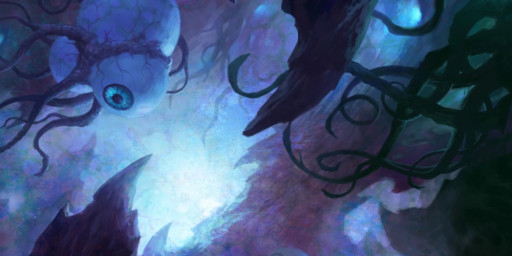
Even cosmic horror campaign need low level enemies to overcome.
A humanoid, twisted into a servant of ruinous powers barely within human comprehension. Tharizdun, the Chained God. Atropus, the World Born Dead. Pandorym, the God-Killer. Or maybe they simply reached their minds out to touch the void, or the Far Realms. How much of their humanity is left is unknown, but they are definitely hostile.
Their bodies have been warped too. Purple crystals in place of eyes, worms for hair, mouths in places there shouldn’t be, too many fingers, wounds that weep black liquid, and voids in the flesh that open not into gore, but a star filled night.
The revelator is a low level enemy with a twist, able to get itself out of range of the party, and debuff their enemies. The body horror element will also have your players squirming in their seats.
- Revelator
- Medium aberration, typically chaotic evil
- AC: 14
- HP: 22
- SPD: 30ft
- STR: 10 (+0) DEX: 14 (+2) CON: 12 (+1) INT: 14 (+2) WIS: 14 (+2) CHA: 8 (-1)
- Damage Resistances: Psychic
- Senses: darkvision 60ft, passive perception 12
- Challenge: 2 (450xp)
- ACTIONS
- Reveal Light: One target the Revelator can see within 60ft has to make a DC14 wisdom saving throw or take 8 (2d6) psychic damage.
- Mutating Touch: Melee Weapon Attack: +6 to hit, reach 5ft., one target. Hit 7 (1d8 + 3) force damage. On a hit the target must roll 2d4. 1d4 determines the negative effect, while the second d4 determines the duration in rounds. The effect finishes at the end of the turn.
- Teeth Growth: A jaw forms in the knee of the target and reduces the target's movement to ten feet as it babbles.
- Cilia: Fleshy cilia grow inside the mouth of the target, making them unable to speak.
- Fractal Eyes: One eye of the target begins to grow new iris’ uncontrollably. Disadvantage on attack rolls and ability checks which rely on sight.
- Rend: The target takes 6 (2d4) force damage at the start of each of their turns as their body rips open at random.
- REACTIONS
- Blink (recharge 5-6): When the Revelator takes damage, it can teleport to a point it can see up to 30ft away.
13. Meteor Beast
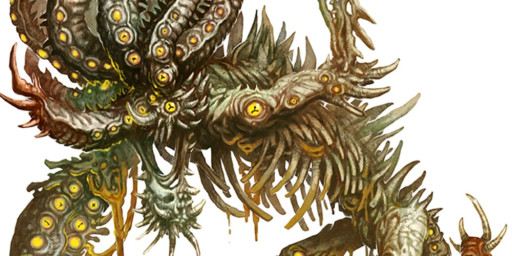
How do you describe the indescribable?
Meteor Beasts themselves are hard to describe, they’re antithetical to the material plane. Just being near them causes people’s bones to ache and their noses to bleed. Trying to look at one causes instant piercing headaches. Those who have caught glimpses of them say that they might be quadrupedal. That they’re a greasy black color, but with an iridescent sheen.
They seem to take particular umbridge toward clerics of good or neutral aligned gods.
The Meteor Beast’s strength comes from how alien and evocative it is. You could imagine your players being sent out to explore the landing siteof a fallen star. Finding that birds are singing discordant songs and plants mutating, growing strange fruit.
Or maybe they’re the attack dogs of an aberrant force or deranged cultists. The stars begin to fall when the fight goes against them, calling in reinforcements. Maybe they’ve backed the party into a dungeon or building, and a Meteor Beast is sent in to flush them out.
- Meteor Beast
- Large aberration, typically chaotic evil
- AC: 14
- HP: 120
- SPD: 30ft climb 30ft
- STR: 18 (+4) DEX: 16 (+3) CON: 14 (+2) INT: 8 (-1) WIS: 14 (+2) CHA: 8 (-1)
- Saving throws: Strength +7, Dexterity +6
- Skills: Athletics +7, Acrobatics +6, Perception +5
- Condition Immunities: Frightened, charmed
- Damage Resistances: Radiant, psychic
- Senses: darkvision 60ft, passive perception 15
- Challenge: 8 (3900xp)
- Immutable Form: This creature cannot suffer from effects that would change its size or shape.
- Squeeze: Moving through a space only 5ft wide does not slow this creature down.
- Limited Phase: This creature can pass through solid objects that are no more than 3ft thick. If the Meteor Beast ends its turn inside an object, it is shunted out to the nearest free space, taking 1d10 force damage every 5ft it has to move, with a minimum damage of 1d10.
- Antithetical: Creatures that start their turn within 30ft of the Meteor Beast and can see it suffer 1d4 psychic damage.
- ACTIONS
- Rend: Melee Weapon Attack: +7 to hit, reach 5ft., one target. Hit 7 (1d8 + 3) force damage.
- Antilife Breath: 60ft line, DC14 dexterity saving throw. On a failure, the target takes 10 (3d6) necrotic damage and its maximum hit points are reduced by the same amount. The hit point maximum returns to normal at the end of the next long rest.
- BONUS ACTIONS
- Hypnotic Presence(recharge 5-6): DC14 intelligence save, range 15ft. On a failure, the target is stunned for the next minute. The target can repeat the saving throw at the endof each of its turns. If the target creature succeeds on a saving throw to prevent or end the condition, it is immune to the effect for the next hour.
14. Suturebeast
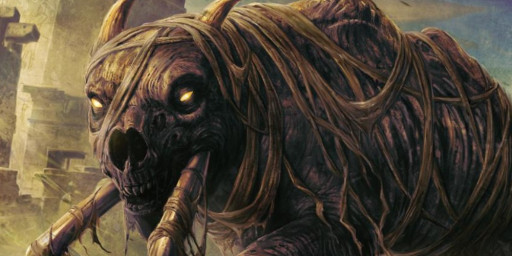
Frankenstien's dog is not a good boy
The Suturebeast is an undead monster stitched together from chunks of many different creatures into a quadrupedal form. It’s often used as a mount by more combat oriented practitioners of the necrotic arts.
Suturebeasts, despite their size, are highly agile. The more damage they take, the faster they get, as chunks of them are cut, bludgeoned or blasted away.
Unless being used as a mount, Suturebeasts are very aggressive and animalistic in combat, preferring to close the distance and rip enemies apart by hand.
Killing a Suturebeast is essentially a process of dismemberment. It’s also a gross creature, all rotting meat and exposed bone. Its “flesh projectile” ability is the creature hacking up a chunk of its internal structure and spitting it at a nearby target. “Bone whirlwind” involves the creature essentially dislocating every joint in its body, forcing its limbs to twist and flail in unnatural directions at high speed.
- Suturebeast
- Large undead, typically chaotic evil
- AC: 14
- HP: 75
- SPD: 30ft climb 15ft
- STR: 16 (+3) DEX: 12 (+1) CON: 14 (+2) INT: 8 (-1) WIS: 8 (-1) CHA: 8 (-1)
- Skills: Athletics +7, Acrobatics +4
- Condition Immunities: Poisoned
- Damage Immunities: Poison
- Senses: darkvision 60ft, passive perception 9
- Challenge: 5 (1800xp)
- Increasing Speed: For every 20hp of damage the Suturebeast takes, its AC increases by 1.
- ACTIONS
- Multiattack: When the Suturebeast takes the attack action, it can make two attacks.
- Claw: Melee Weapon Attack: +6 to hit, reach 5ft., one target. Hit 7 (1d8 + 3) slashing damage.
- Flesh Projectile: Ranged Weapon Attack: +4 to hit, range 60ft., one target. Hit 6 (1d6 + 3) bludgeoning damage.
- BONUS ACTIONS
- Bone Whirlwind(recharge 6):Each creature within 10ft of the Suturebeast has to make a DC14 dex saving throw or take 13 (3d6+3) slashing damage or half as much on a success.
- REACTIONS
- Half down: When the Suturebeast falls below 35hp it can, as a reaction, use its “Bone Whirlwind” ability, whether or not it has recharged.
15. The Spotter

This creature is all about the terrain. Put them in a high place, where the party has to climb to get them.
Sometimes, boss encounters involve a single enemy. Other times, they involve a creature with groups of minions at their beck and call. The Spotter is the latter. Someone who will place themselves up in a hard to reach vantage point with his fellow archers, and rain hell on the incoming party.
- The Spotter
- Medium humanoid (any), typically neutral evil
- AC: 15
- HP: 100
- SPD: 30ft
- STR: 8 (-1) DEX: 16 (+3) CON: 14 (+2) INT: 10 (+0) WIS: 18 (+4) CHA: 10 (+0)
- Saving throws: Wis +6, Dex +5
- Senses: darkvision 60ft, passive perception 14
- Challenge: 8 (3900xp)
- Legendary Resistance (3/day): The Spotter can choose to pass an otherwise failed saving throw.
- ACTIONS
- Multiattack: The Spotter can make two attacks when it makes the attack action, and use the “spot” ability.
- Longbow: Ranged Weapon Attack: +6 to hit, range 150/600ft., one target. Hit 7 (1d8 + 3) piercing damage.
- Shortsword: Melee Weapon Attack: +6 to hit, reach 5ft., one target. Hit 6 (1d6 + 3) slashing damage.
- Spot: The Spotter targets one creature it can see within 150ft. All attack rolls against that creature have advantage, and each attack against that target deals an additional 1d4 damage. The Spot lasts until the start of the Spotter’s next turn.
- LEGENDARY ACTIONS (3/ROUND)
- Attack Flare: All allied creatures within 60ft of the Spotter can use their reaction to make a single attack.
- Move Flare: All allied creatures within 60ft of the Spotter can move up to 15ft without provoking opportunity attacks.
- Warding Flare: All creatures within 60ft of The Spotter lose their “stealthed” status.
16. The Balgurator
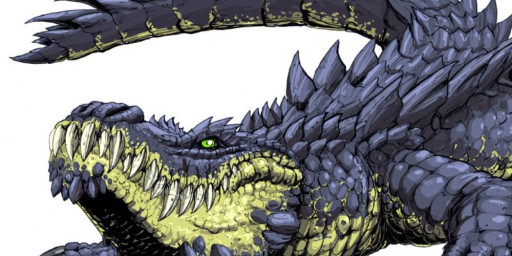
A Balgurator can make an excellent boss for a side quest, or a random encounter on a longer journey.
Ah, the Balgurator. Named so because it looks like a combination between a Balgura and an alligator. Covered in tough scales that range in color from blue to mottled brown depending on their environment. A long alligator snout and tail, a ridged back and reptilian eyes. Scaled, gorilla-like arms and legs, which end in curved claws designed to grab and pull down small boats.
This predator lies in ambush wherever convenient meals can be found. Alongside low bridges, beneath city docks, in mangroves and swamps, and watering holes where animals come to drink. And once they gain a taste for humanoid flesh, they can be a terrible menace.
The Balgurator is dangerous, but won't fight to the death if it doesn’t have to.
- Balgurator
- Huge Monstrosity, neutral
- AC: 15
- HP: 200
- SPD: 40ft, 50ft swim
- STR: 18 (+4) DEX: 14 (+2) CON: 16 (+3) INT: 7 (-2) WIS: 12 (+1) CHA: 7 (-2)
- Saving throws: Dexterity +5, constitution +6
- Skills: Perception +5, Stealth +5, Athletics +7
- Senses: Darkvision 120 ft., passive perception 15
- Challenge: 7 (2900xp)
- Hold Breath: The Balgurator can hold its breath for 30 minutes.
- ACTIONS
- Multiattack: The Balgurator makes three attacks, one with its bite, one with its claw and one with its tail.
- Bite: Melee Weapon Attack: +6 to hit, reach 5ft., one target. Hit 15 (2d10+4) piercing damage.
- Claw: Melee Weapon Attack: +6 to hit, reach 5ft., one target. Hit 9 (2d4+4) slashing damage.
- Tail: Melee Weapon Attack: +6 to hit, reach 5ft., one target. Hit 9 (1d10+4) bludgeoning damage.
- BONUS ACTIONS
- Predatorial speed: The Balgurator makes a dash action as a bonus action.
- Death roll(recharge 5-6): After the Balgurator hits with a melee attack, the Balgurator can force the target to make a competing athletics check. On a failure the target is knocked prone and takes 19 (3d12) bludgeoning damage. On a success, the target takes half as much damage and is not knocked prone.
17. Officer
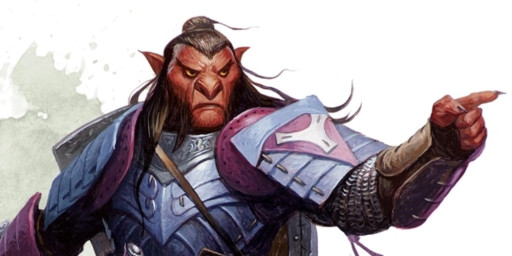
Command and conquer.
Spice up your hostile warband with this creature. Like a small-scale version of The Spotter, the Officer sits in the back protected by a pavise - a large deployable shield- and gives commands to their troops. Attached to their pavise is a heavy bolt thrower, an oversized crossbow, which they use to keep enemies pinned down while their soldiers close in. Killing the Officer might send the enemy warband into panic or a route, or just reduce their capabilities.
- Officer
- Medium Humanoid, any alignment
- AC: 17
- HP: 39
- SPD: 30ft
- STR: 10 (+0) DEX: 18 (+4) CON: 12 (+1) INT: 14 (+2) WIS: 14 (+2) CHA: 14 (+2)
- Skills: Perception +4
- Senses: Darkvision 60ft (race dependent), passive perception 14
- Challenge: 4 (1100xp)
- Emplaced Warrior: The Officer can only use his bolt thrower while behind their pavise.
- ACTIONS
- Bolt thrower: Ranged Weapon attack +7 to hit reach range 80/320ft one target Hit 13 (2d8+4) piercing damage.
- Scimitar: Melee Weapon attack, +7 to hit, reach 5ft one target Hit 7 (1d6+4) slashing damage.
- Forward: All allied creatures within 60ft who can hear the Officer have their movement speed increased by 15ft until the end of their next turn.
- Suppression: The Officer targets one creature it can see within 320ft, launching a bolt close by their head. The creature has to make a DC14 wisdom saving throw or have their speed reduced by 15ft until the end of their next turn.
- BONUS ACTIONS
- Pavise: The Officer puts up a pavise with a bolt thrower attached to it. While they are behind the paise, they benefit from half cover.
- Officers mark: The Officer chooses one creature it can see within 320ft. That creature can no longer benefit from half or three quarters cover until the end of its next turn.
18. Hangman's Golem
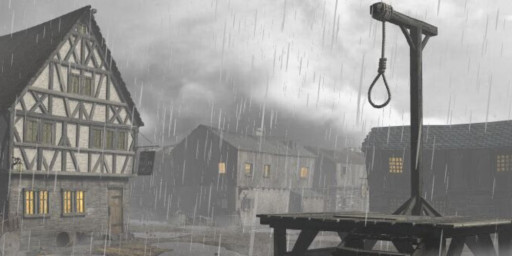
Like a mimic disguised as a chest, a Hangman's Golem will have your players frightened of rope for sessions on end.
While a Hangman’s Golem can be made deliberately with a bundle of rope and the right incantation, they tend to manifest in places of great tragedy. Seemingly absorbing the heavy atmosphere of the environment around them and becoming a malignant, hostile force. When unmoving, the Hangman’s Golem looks like a pile of rope.
- Hangman's Golem
- Medium construct, typically chaotic evil
- AC: 16
- HP: 65
- SPD: 30ft, 30ft climbing
- STR: 18 (+4) DEX: 14 (+2) CON: 14 (+2) INT: 8 (-1) WIS: 12 (+1) CHA: 8 (-1)
- Skills: athletics +7, stealth +6
- Senses: Passive perception 11
- Challenge: 5 (1800xp)
- Shifting form: The Hangman's Golem does not provoke opportunity attacks, and can pass through a 1-inch space.
- Disguised form: When not moving, the Hangman's Golem is indistinct from a pile of rope.
- Grappler: For every creature the Hangman's Golem has restrained, its AC increases by 2.
- ACTIONS
- Multiattack: The Hangman’s Golem makes two slam attacks.
- Slam: Melee Weapon Attack: +7 to hit, reach 10ft, one target. Hit 7 (1d8 + 3) bludgeoning damage. The target also has to make an athletics or acrobatics check, competing against the Golem’s athletics check. On a failure, the target is restrained and cannot speak or cast spells with a verbal component. The restrained target can repeat the check as an action on their turn, ending the effect on a success.
- BONUS ACTIONS
- Rope Whirlwind (recharge 6): The Hangman's golem can make a slam attack against each creature within 10ft.
- Choke: The Hangman's Golem deals 9 (1d10+4) bludgeoning damage to a target they have restrained.
- REACTIONS
- Body Shield. When targeted by a melee or ranged attack, before the Hangman's Golem knows the result of the roll, it can choose to interpose a restrained creature between itself and the attack. If the attack misses the Hangman’s Golem, but beats the AC of the restrained creature, then the attack hits the restrained creature.
19. Anticleric
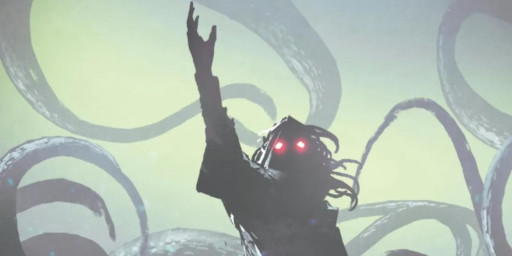
New and unusual abilities have a way of striking fear in players.
The Anticleric appears to be a more advanced version of the Revelator. Not a leader, but a specialist. A profane counterpoint to holy warriors. Those who would seek to end the threats posed by elder evils. Anticlerics tend to have the usual arrangement of limbs expected for a humanoid, but the same strange mutations. Mouths, digits and eyes where there shouldn’t be, skin turning to rock or crystal or some kind of continuously dripping liquid. They often wear armor made of unknown metals, and robes decorated with the esoteric symbols of the entities they worship.
- Anticleric
- Medium aberration, typically chaotic evil
- AC: 17, armor + shield
- HP: 35
- SPD: 30ft
- STR: 14 (+2) DEX: 12 (+1) CON: 10 (+0) INT: 10 (+0) WIS: 20 (+5) CHA: 10 (+0)
- Saving Throws: Wis +8
- Skills: Perception +8, Survival +8
- Damage Resistances: Radiant, Psychic
- Condition Resistances: Frightened, charmed
- Senses: Darkvision 60ft, Passive Perception 18
- Challenge: 6 (3200xp)
- Light Hunger: The Anticleric is able to passively detect any radiant damage or healing magic within 60ft. This ability can only be blocked by a thin sheet of lead.
- ACTIONS
- Rending Strike: Melee Weapon Attack: +5 to hit, reach 10ft, one target. Hit 5, (1d6 + 2) Force damage. Target must make a DC16 constitution saving throw. On a failure, if the target has any uses of channel divinity, they take additional psychic damage equal to their class level and lose a use of their channel divinity.
- Mutating Light: One target the Anticleric can see within 60ft has to make a DC16 wisdom saving throw. On a failure the target takes 7 (2d6) psychic damage, or half as much on a success. On a failure the target must roll 2d4. 1d4 determines the negative effect, while the second d4 determines the duration in rounds. The effect finishes at the end of the turn.
- Teeth Growth: A jaw forms in the knee of the target and reduces the target's movement to ten feet as it babbles.
- Cilia: Fleshy cilia grow inside the mouth of the target, making them unable to speak.
- Fractal Eyes: One eye of the target begins to grow new iris’ uncontrollably. Disadvantage on attack rolls and ability checks which rely on sight.
- Rend: The target takes 5 (2d4) force damage at the start of each of their turns as their body rips open at random.
- REACTIONS
- Vanquish Life: When a spell or ability which recovers hit points is cast within 60ft of the Anticleric, the Anticleric can force the caster to make a DC16 intelligence saving throw. On a failure, no hit points are recovered. This ability can be blocked by 1 foot of stone, 1 inch of common metal, a thin sheet of lead, or 3 feet of wood or dirt.
20. Flayed Demon
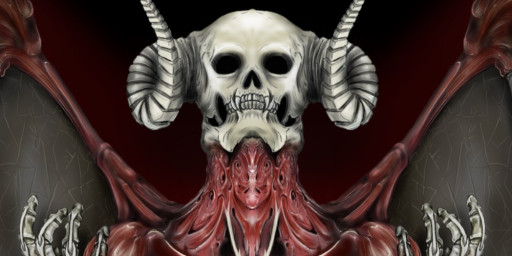
Be careful. Accidentally dragging a player into an alternate dimension can have serious consequences for your campaign
Your players come upon an environment that was witness to violence a long time ago. A dungeon perhaps, with blood splatters on the walls and ceiling dried to a rusty brown.
During the night, one of the blood spatters begins to well up, and drip again, until it’s sheening like it’s freshly spilt. With a screech, a creature leaps through it. A vaguely humanoid shape twisted onto all fours. It has been flayed, its skin hanging off its shoulders like a cloak, still stuck to the body in fatty patches. The creature's flesh and muscles and tendons are visible and undulating. The face is like that of an elfs or halflings or humans, but that is flayed too. Bloodshot eyes stare, and human teeth gleam from within a lipless mouth. The smell of rot hangs thick around it, and puss leaks from its sides when it breathes. Its hands and feet leave bloody tracks where they move.
Flayed Demons originate from the 81st layer of the abyss. A swamp filled with an acidic blood like substance. They use blood portals to pass back and forth between the planes. Such portals have a small chance of forming at the site of great acts of violence, or can be created through a profane ritual. Once a Flayed Demon has a portal to a location, it sets up an ambush point, killing or incapacitating passers by before dragging them to the 81st layer to be devoured. Once one Flayed Demon builds an ambush site, up to two others can form what is known as a triarch, working together to kill.
Flayed Demons are incredibly dangerous. If someone gets dragged through a portal, there’s no getting out except by grabbing hold of a Flayed Demon and dragging them back through.
- Flayed Demon
- Medium fiend (demon), typically chaotic evil
- AC: 14
- HP: 95
- SPD: 40ft
- STR: 16 (+3) DEX: 16 (+3) CON: 16 (+3) INT: 5 (-3) WIS: 5 (-3) CHA: 5 (-3)
- Skills: Stealth +6, athletics +6, acrobatic +6
- Damage Immunities: Poison, acid
- Condition Immunities: Poisoned
- Senses: Passive Perception 5
- Languages: abyssal
- Challenge: 6 (2300xp)
- Blood portal: When a Flayed Demon kills a sentient humanoid, it can spend eight hours turning the body into a portal to the 81st level of the abyss. Only Flayed Demons and objects or creatures that are in direct contact with them can pass through a blood portal.
- Foul Stench: When the Flayed Demon takes damage, all creatures within 5ft of it must make a DC14 constitution saving throw, taking 5 (2d4) poison damage on a failed save or half as much on a success.
- ACTIONS
- Multiattack: A flayed demon makes three attacks. Two claw attacks and one bite attack.
- Claw: Melee Weapon Attack: +6 to hit, reach 5ft, one target. Hit 7 (1d8 + 3) slashing damage.
- Bite: Melee Weapon Attack: +6 to hit, reach 5ft, one target. Hit 5 (1d6 + 3) piercing damage. The target must make a dc14 constitution saving throw. On a failure, the target takes 7 (2d6) poison damage, and becomes poisoned for the next minute. A poisoned creature can repeat the saving throw at the end of their turn. On a successful save, the target creature suffers no other ill effects.
- BONUS ACTIONS
- Drag: As a bonus action the Flayed Demon can attempt to grapple a poisoned target.

